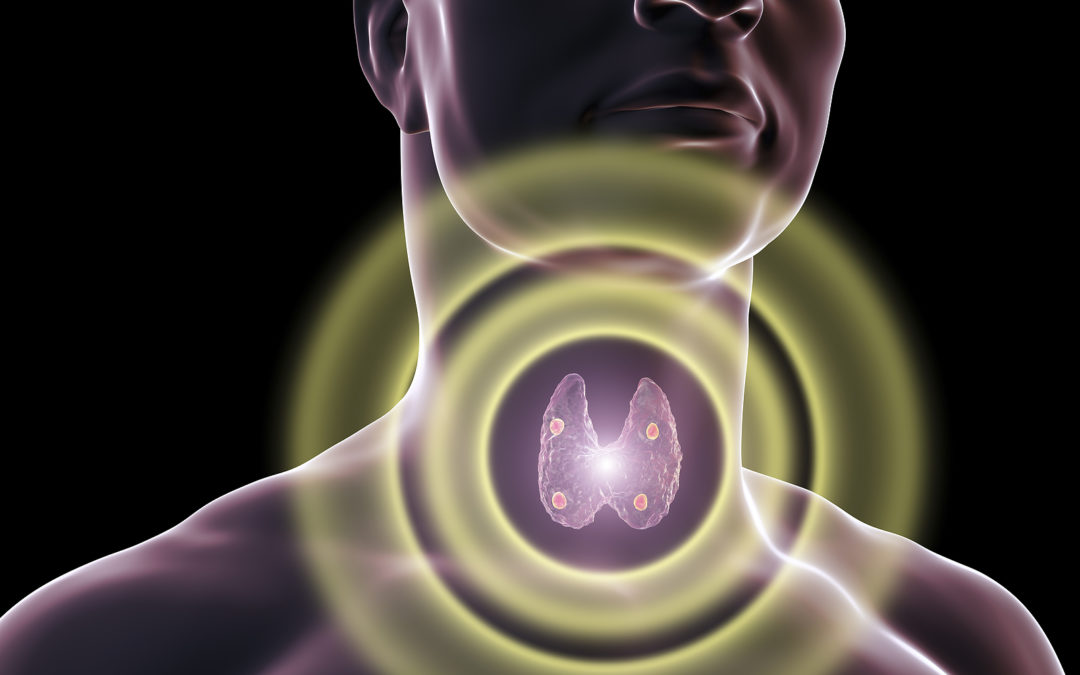A parathyroid localization scan can be used to identify a defective parathyroid gland. The scan can play a vital role in the planning and surgical treatment of hyperparathyroidism (HPT). Localization studies are purely used for locating the abnormal gland or glands, and not to diagnose hyperparathyroidism.
What Is a Parathyroid Gland Scan?
Localization scans can help identify an abnormal parathyroid gland. The scans can be completed as part of an HPT work up. When a parathyroid gland becomes abnormal it starts to produce excess amounts of PTH, it essentially turns into a PTH production factory. Excess PTH in turn causes elevation of calcium in the bloodstream. The abnormal parathyroid gland that is working harder slowly becomes larger and larger; it also changes it’s composition form half fat cells and half parathyroid cells to a larger proportion of parathyroid cells and less fat. These changes make the abnormal parathyroid gland larger and denser (less fatty). Localization scans look for these changes in the abnormal parathyroid gland. The PTH level correlates to the size of the abnormal parathyroid gland.
An ultrasound is commonly used as the first parathyroid localization scan performed to locate the abnormal parathyroid gland. . It involves the use of sound waves to look at the thyroid, parathyroid, lymph nodes muscles, blood vessels, and other structures beneath the skin. It involves no radiation exposure and in a great majority of patient is able to locate the abnormal parathyroid gland. Ultrasound is best done by experts who do parathyroid ultrasounds on a regular basis. Most expert parathyroid surgeons performs their own ultrasound. Surgeons have the distinct advantage of being able to compare what they find on ultrasound to what they see during surgery. This is gives them a clear advantage in interpreting ultrasound findings and being more discerning.
A sestamibi scan is probably the most commonly used scan to find the abnormal gland. However, the sestamibi scan is highly technical involving the use of radioactive material that becomes quickly absorbed by an abnormal parathyroid gland and the thyroid. From here, the thyroid immediately releases the radioactive material. But, an abnormal parathyroid will retain this material. Two scans are done, one immediately, preferably within 5 minutes of injection; the second scan is done two hours later when the thyroid gland has let go of the radioactive material & the abnormal parathyroid is still holding on to it.
After both sestamibi scans are performed, a doctor compares results. In doing so, the doctor can use the scans to see if an abnormal parathyroid is present.
A sestamibi scan is approximately 85% accurate when a patient’s parathyroid hormone (PTH) level is over 150 pg/ml. Yet, the accuracy of sestamibi scans drops below 50% when a patient’s PTH level is less than 100 pg/ml. Due to the fact the accuracy rate for sestamibi is not high with smaller abnormal parathyroid glands, it has become less favored by expert parathyroid surgeons. A 4D parathyoid CT scan is more useful and is now the second choice of scans in localization.
What Is a Parathyroid 4D CT Scan?
A parathyroid 4D CT scan is considered the most accurate type of localization study. This scan involves injection of a dye that is picked up and released at different times by the thyroid, abnormal parathyoids, and lymph nodes. The scan can show the exact location of the abnormal parathyoid gland and its relation to other structures such as the thyroid, blood vessels, breathing tube (trachea), the esophagus and more; it can even tell you if an abnormal parathyroid is close to a patient’s voice box nerve. Further, the scan can indicate if a gland is not in its normal position and has shifted anywhere from the upper neck to down in the chest.
A study of 208 patients who underwent parathyroid surgery highlights the effectiveness of 4D CT scans. Study researchers ultimately concluded that a parathyroid 4D CT scan can be a viable option to capture high-resolution images and localize abnormal parathyroid glands in HPT patients.
What Is a PET Choline Parathyroid Scan?
Choline is an organic, water-soluble compound that impacts the nervous system, metabolism, and various body functions.
During a PET choline parathyroid scan, choline tracers can be used to detect hyperfunctioning parathyroid tissue. However, additional research is required to determine the efficacy of PET choline parathyroid scans. It is currently being done at several university hospitals under experimental protocols. We have used it on some of our patients with some degree of success when all other scans have failed.
Are Parathyroid Scans Necessary?
Dr. Babak Larian of the CENTER for Advanced Parathyroid Surgery in Los Angeles may require one or more parathyroid scans to accurately identify an abnormal gland, without the need for exploratory surgery.
Each parathyroid scan can provide Dr. Larian with insights into the precise location of an abnormal gland, as well as how many glands may be malfunctioning. After any defective glands are identified, Dr. Larian develops a parathyroidectomy treatment plan.
With localization scans, Dr. Larian can prepare for a minimally invasive parathyroidectomy, since he’ll know where to make an incision to minimize scarring and limit the risk of complications. Next, Dr. Larian performs parathyroid gland surgery, followed by a 4 gland assessment to review the results of treatment.
Book an Appointment with Dr. Larian to Explore Treatment Options for a Defective Parathyroid Gland
A parathyroid localization scan can help determine if someone is dealing with HPT. By meeting with Dr. Larian, people who experience recurring headaches, chronic fatigue, or other HPT symptoms can undergo localization studies to find out if one or more parathyroid glands are defective. Then, if Dr. Larian finds a patient is dealing with parathyroid gland abnormalities, he can determine if a parathyroidectomy can be used to treat these issues.
Dr. Larian offers free in-person and virtual appointments to those who experience HPT symptoms. To book an appointment with Dr. Larian, please contact us online or call us today at 310-461-0300.










